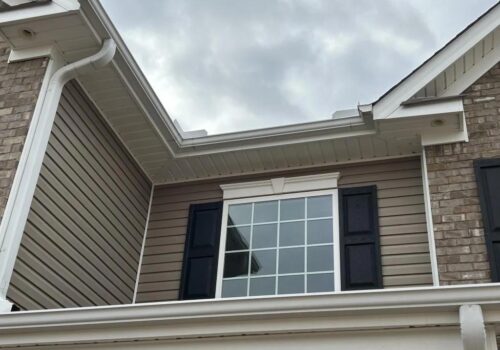Tiles and flooring are essential elements in any interior design, providing both functional and aesthetic benefits. From ancient civilizations to modern times, tiles and flooring have evolved significantly, offering a wide range of options for homeowners and designers. In this article, we will explore the different types of tiles and flooring options, factors to consider when choosing, installation and maintenance tips, as well as the latest trends and innovations in this industry.
I. Introduction
A. Definition and importance of tiles and flooring:
Tiles and flooring refer to the materials used to cover the ground surface of a room or building. They serve as the foundation for the overall design and play a crucial role in enhancing the functionality and visual appeal of the space.
B. Brief history and evolution of tiles and flooring:
Tiles have been used for centuries, dating back to ancient civilizations such as the Egyptians and Romans. Initially, tiles were made from natural materials such as stone and clay, but with advancements in technology, various new materials and designs have emerged.
II. Types of Tiles
A. Ceramic Tiles
1. Description and characteristics:
Ceramic tiles are made from clay that is shaped and fired at high temperatures. They come in various sizes, colors, and patterns, making them versatile and suitable for different design styles.
2. Pros and cons:
Pros of ceramic tiles include their affordability, durability, and resistance to moisture and stains. However, they can be easily chipped or cracked if not handled carefully.
3. Applications and suitable areas:
Ceramic tiles are commonly used in kitchens, bathrooms, and other high-moisture areas due to their water-resistant properties.
B. Porcelain Tiles
1. Description and characteristics:
Porcelain tiles are similar to ceramic tiles but are made from a finer and denser clay. They are fired at higher temperatures, making them more durable and water-resistant.
2. Pros and cons:
Porcelain tiles offer excellent durability, resistance to scratches and stains, and a wide range of design options. However, they are generally more expensive than ceramic tiles.
3. Applications and suitable areas:
Porcelain tiles are suitable for both indoor and outdoor use and are commonly used in high-traffic areas such as hallways and entryways.
C. Natural Stone Tiles
1. Description and characteristics:
Natural stone tiles, such as marble, granite, and limestone, are created from natural materials quarried from the earth. Each stone type offers unique colors and patterns, adding a touch of elegance to any space.
2. Pros and cons:
Natural stone tiles are known for their timeless beauty and durability. However, they require regular maintenance and sealing to prevent stains and damage.
3. Applications and suitable areas:
Natural stone tiles are often used in high-end residential and commercial settings, including kitchens, bathrooms, and foyers.
D. Vinyl Tiles
1. Description and characteristics:
Vinyl tiles are made from synthetic materials, primarily PVC (polyvinyl chloride). They are available in a wide range of designs, including wood and stone patterns.
2. Pros and cons:
Vinyl tiles are affordable, easy to install, and low-maintenance. However, they may not offer the same level of durability and luxury as natural stone or porcelain.
3. Applications and suitable areas:
Vinyl tiles are commonly used in areas with high moisture, such as basements, laundry rooms, and bathrooms.
III. Flooring Options
A. Hardwood Flooring
1. Description and characteristics:
Hardwood flooring is made from solid wood planks or engineered wood that consists of multiple layers. It provides a warm and natural look to any space.
2. Pros and cons:
Hardwood flooring offers durability, longevity, and a timeless aesthetic. However, it can be susceptible to scratches and water damage.
3. Applications and suitable areas:
Hardwood flooring is suitable for living rooms, bedrooms, and dining areas, but not recommended for high-moisture areas like bathrooms.
B. Laminate Flooring
1. Description and characteristics:
Laminate flooring consists of multiple layers of synthetic materials with a printed design layer on top that mimics the look of wood, stone, or tile.
2. Pros and cons:
Laminate flooring is affordable, easy to install, and resistant to stains and scratches. However, it is less durable than hardwood or tile.
3. Applications and suitable areas:
Laminate flooring is versatile and can be used in various rooms, including living areas, kitchens, and bedrooms.
C. Carpet Flooring
1. Description and characteristics:
Carpet flooring consists of a textile material, usually made from synthetic fibers or natural wool, that is installed on the subfloor.
2. Pros and cons:
Carpet flooring provides warmth, comfort, and sound insulation. However, it can be challenging to clean and may trap allergens and dust.
3. Applications and suitable areas:
Carpet flooring is commonly used in bedrooms, living rooms, and areas where comfort and noise reduction are desired.
D. Tile Flooring
1. Description and characteristics:
Tile flooring refers to the use of tiles to cover the entire surface area of a room. It can be made from ceramic, porcelain, natural stone, or other materials.
2. Pros and cons:
Tile flooring offers versatility, durability, and easy maintenance. However, it can be cold underfoot and may require more effort to install compared to other flooring options.
3. Applications and suitable areas:
Tile flooring is suitable for high-moisture areas such as bathrooms, kitchens, and laundry rooms, as well as outdoor spaces like patios and pool decks.
IV. Factors to Consider in Choosing Tiles and Flooring
A. Durability and lifespan:
Consider the expected foot traffic and wear and tear when choosing tiles or flooring materials to ensure they can withstand the demands of the space.
B. Maintenance and cleaning requirements:
Some materials require regular sealing, polishing, or specific cleaning products. Consider the maintenance requirements and your ability to meet them.
C. Design and aesthetics:
Choose tiles and flooring that complement the overall design theme and style of your space. Consider the color, pattern, and texture options that best fit your preferences.
D. Cost and budget considerations:
Set a budget and consider the upfront costs, installation expenses, and long-term value of the chosen tiles or flooring materials.
E. Environmental sustainability:
Look for eco-friendly options made from renewable or recycled materials and consider the environmental impact of the manufacturing process.
V. Installation and Maintenance Tips
A. Preparing the subfloor:
Ensure the subfloor is clean, level, and free from moisture before installation to prevent future issues.
B. Choosing the right adhesive and grout:
Use appropriate adhesives and grouts suitable for the chosen tiles or flooring materials to ensure a strong and long-lasting installation.
C. Proper installation techniques:
Follow manufacturer guidelines and hire professional installers if necessary to ensure a proper installation that maximizes the longevity and performance of the tiles or flooring.
D. Tips for cleaning and maintaining tiles and flooring:
Use appropriate cleaning products and techniques for the specific materials to prolong their lifespan and maintain their beauty.
VI. Latest Trends and Innovations
A. Sustainable flooring options:
As environmental consciousness grows, there is an increasing demand for eco-friendly flooring materials made from renewable or recycled sources.
B. Digital printing technology in tiles:
Advancements in digital printing technology allow for more intricate and realistic designs on tiles, providing endless options for customization.
C. Innovative tile shapes and patterns:
Designers are now experimenting with unconventional tile shapes, such as hexagons and chevrons, and creating unique patterns to add visual interest and dimension to spaces.
VII. Conclusion
A. Recap of the importance and variety of tiles and flooring options:
Tiles and flooring play a vital role in the functionality and aesthetics of a space, offering a wide range of options to suit different needs and design preferences.
B. Final thoughts on the future of tiles and flooring:
With continuous advancements in technology, we can expect more sustainable, innovative, and customizable options in the future, ensuring that tiles and flooring remain an integral part of interior design.






Comments: